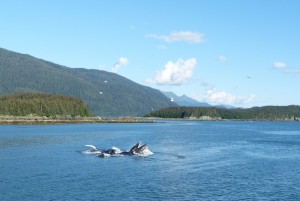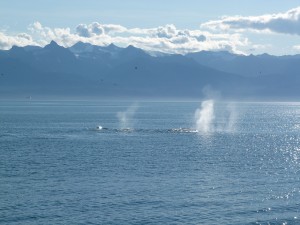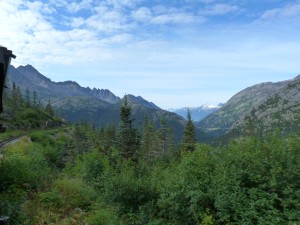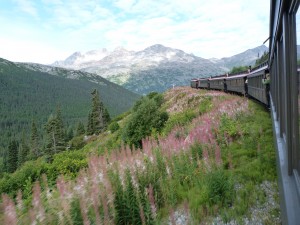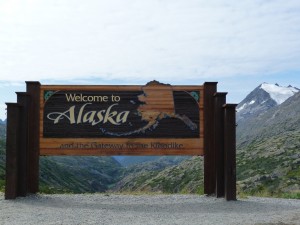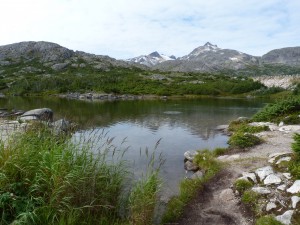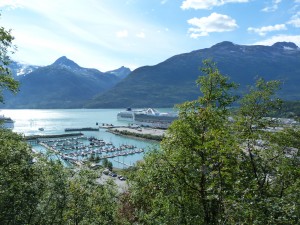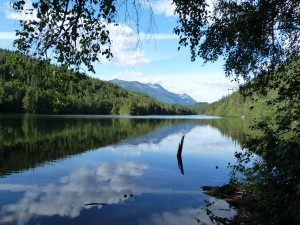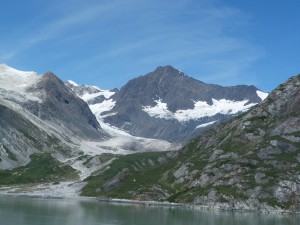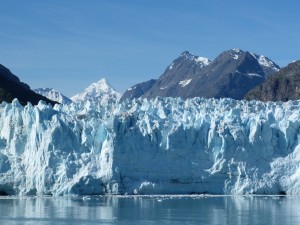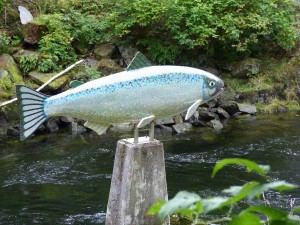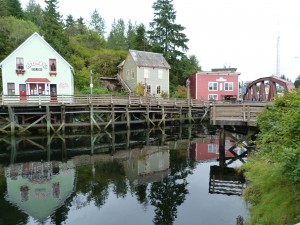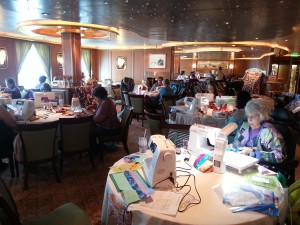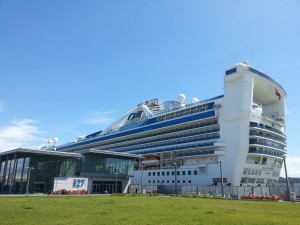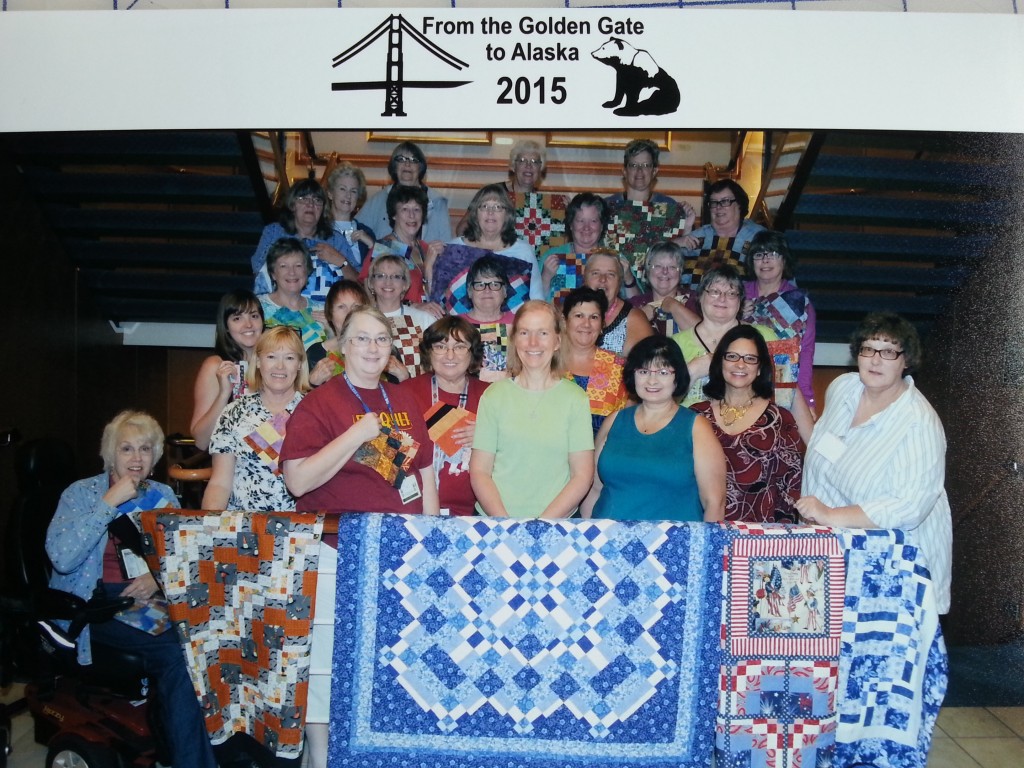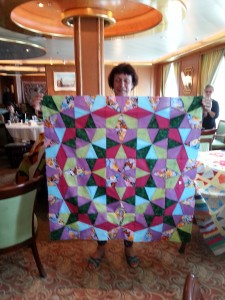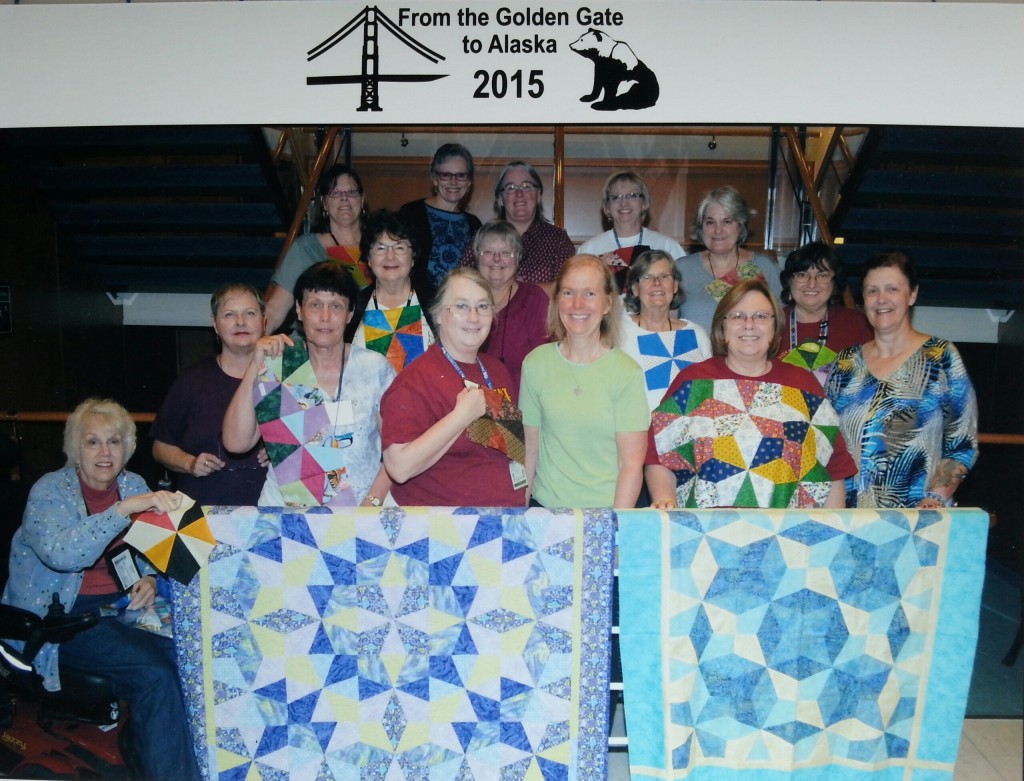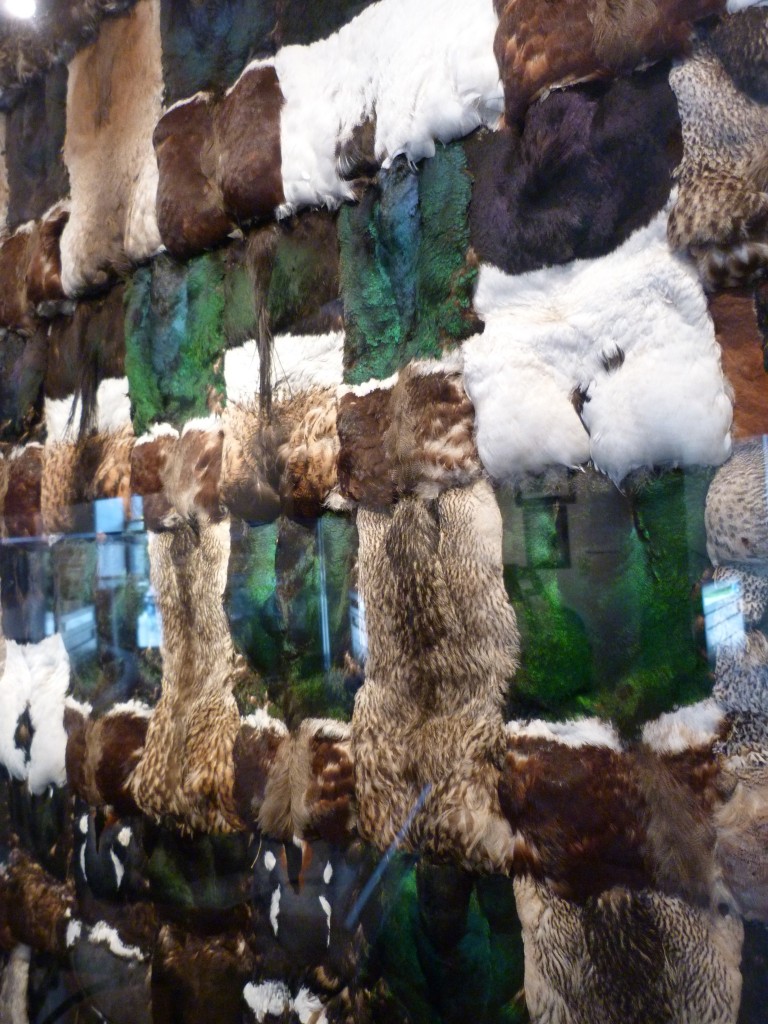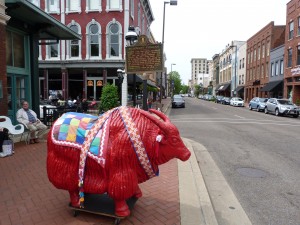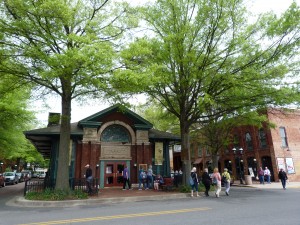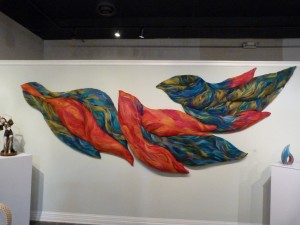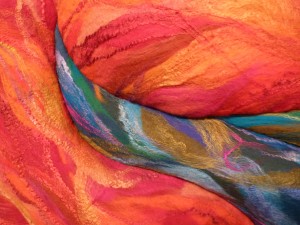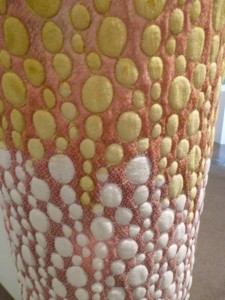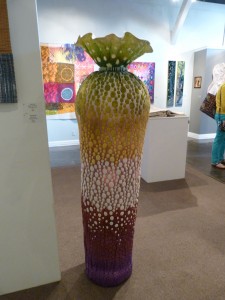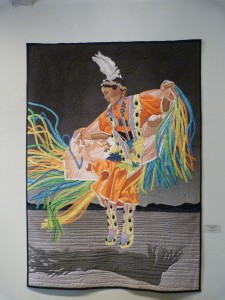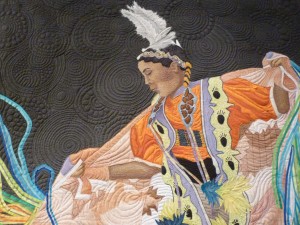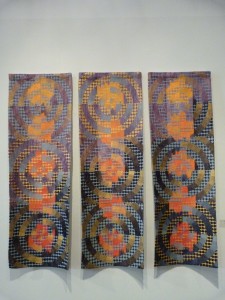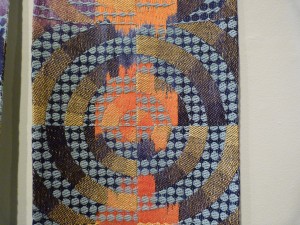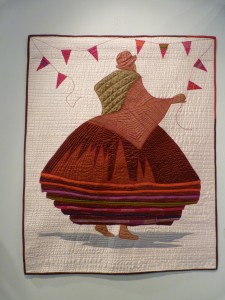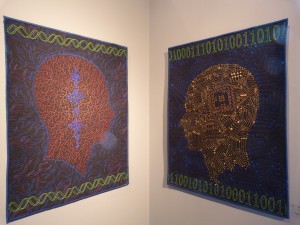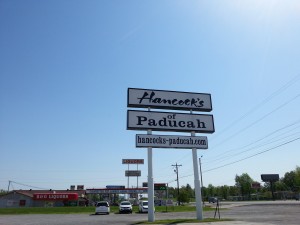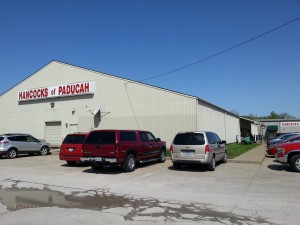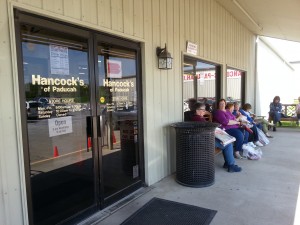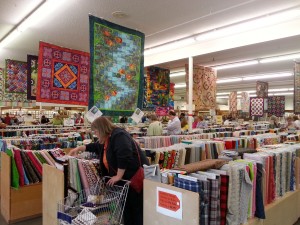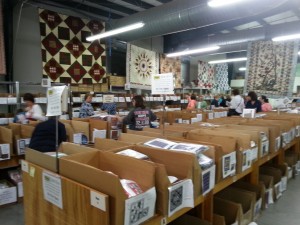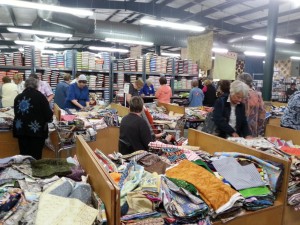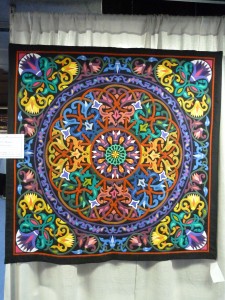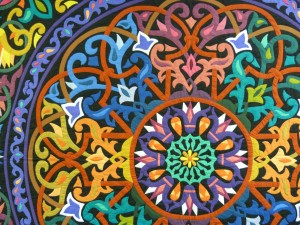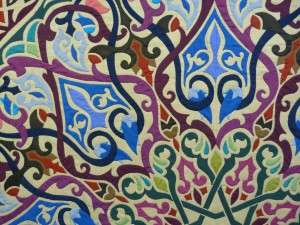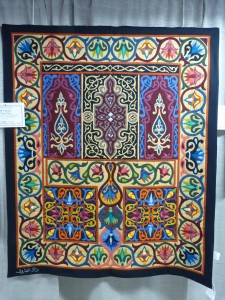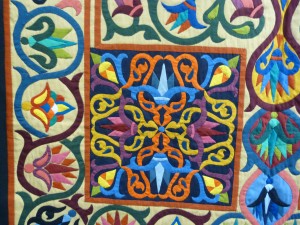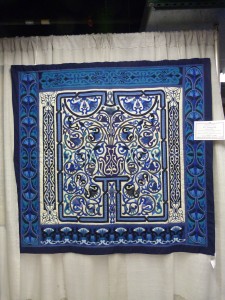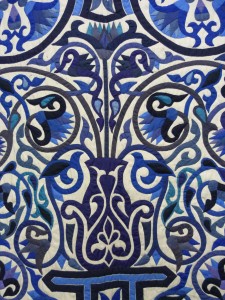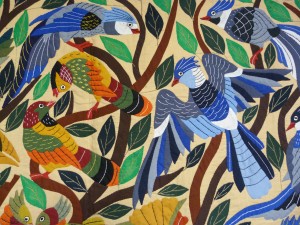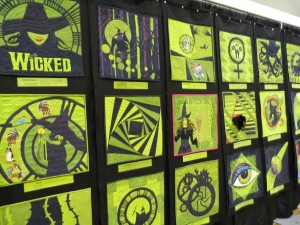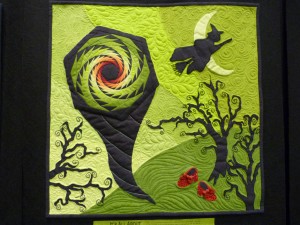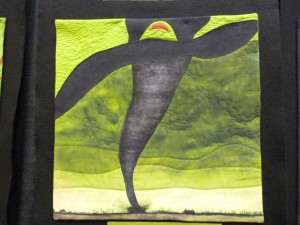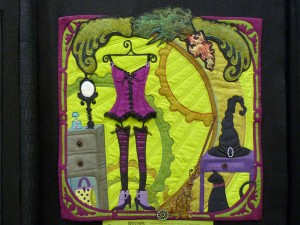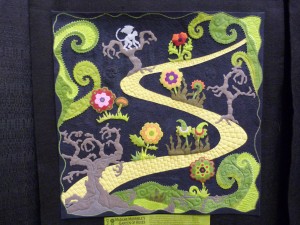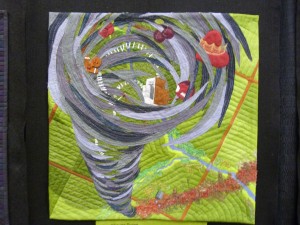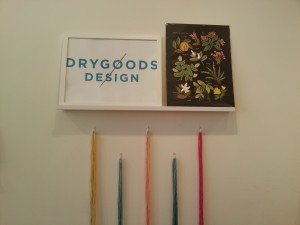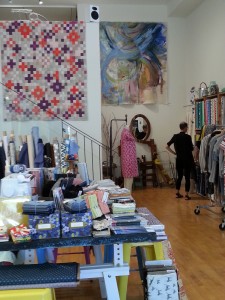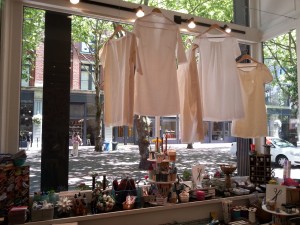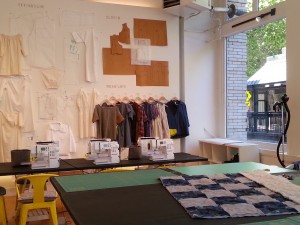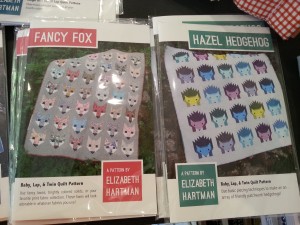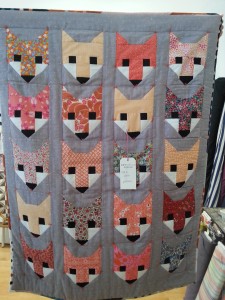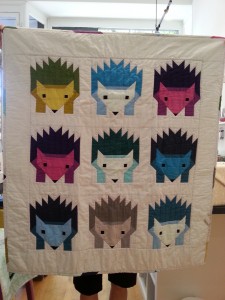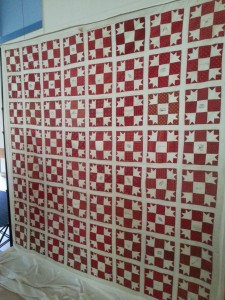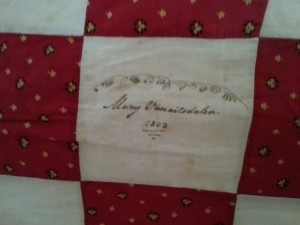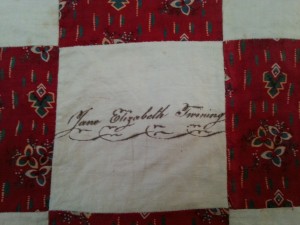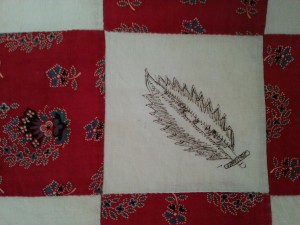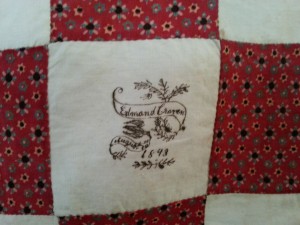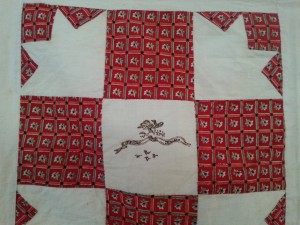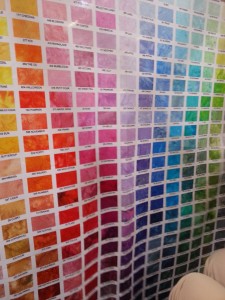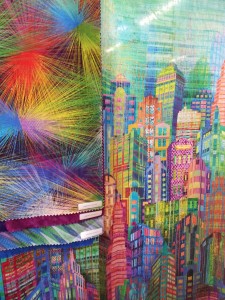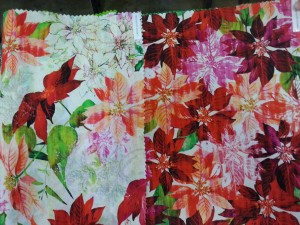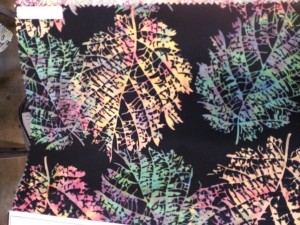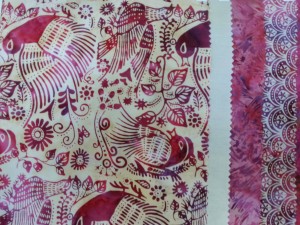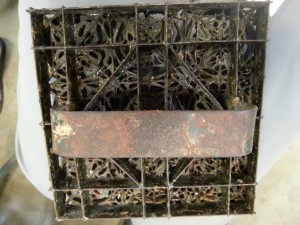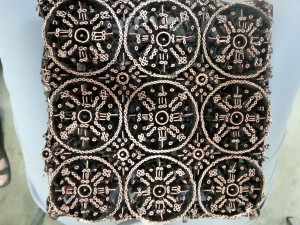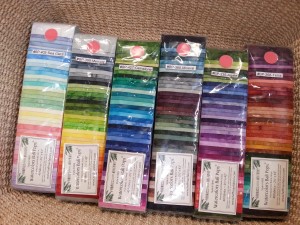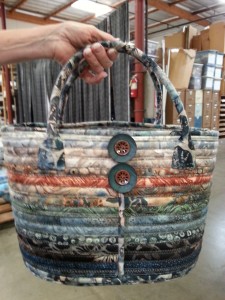I can’t resist sharing some scenery pictures with you. This was such an awesome cruise. The Golden Princess cruise ship sailed from San Francisco on the 10th August and we arrived in Juneau, after two days of quilting at sea. I opted to go on a whale watching outing and it was fantastic. Apparently Juneau had torrential rain for the three days before we arrived, but we were blessed with a glorious day of sunshine. The boat trip was absolutely beautiful and then there the whales! We had several sightings of hump-backs including a couple of times when five all surfaced with their noses together for bubble-net feeding. These creatures are magnificent.
The next morning we docked in Skagway and had another day of sunshine. I took a train trip into the mountains, over White Pass to Douglas, BC. The building of this track to cater to gold rush miners was quite a feat. There were precipitous drops and wooden trellises supporting the track that looked precarious. The train clung to the steep valley side as we climbed and climbed and had stunning views all the way.
We came back by bus along the scenic Klondike Highway, stopping in a couple of places to take pictures of the incredible countryside and the Alaskan boundary.
In Skagway, we had lunch at the Jewell Gardens and went to the quilt shop, (see upcoming blogs), and still had another three hours before sailing. I took a hike up the mountain side from downtown Skagway affording a good view of the Skagway inlet and on up to Lower Dewey Lake which was breathtaking.
Our next cruising destination was Glacier Bay National Park. I was up at 5:00 a.m. to see the sunrise as we sailed into this world-class wilderness of majestic beauty. We spent most of the day there and once again, the sun shone giving us crystal clear views of the dramatic mountains and glaciers. To give you some idea of scale, the glacier face in the picture was 250 feet tall.
From here we sailed to Ketchikan where the weather was cloudy with mist coming and going, but it was mostly dry. I enjoyed walking downtown and up Creek Street. The creek was seething with salmon moving upstream to spawn. My photos of salmon in the water leave much to be desired, so here’s a fine salmon mosaic sculpture as a substitute.
